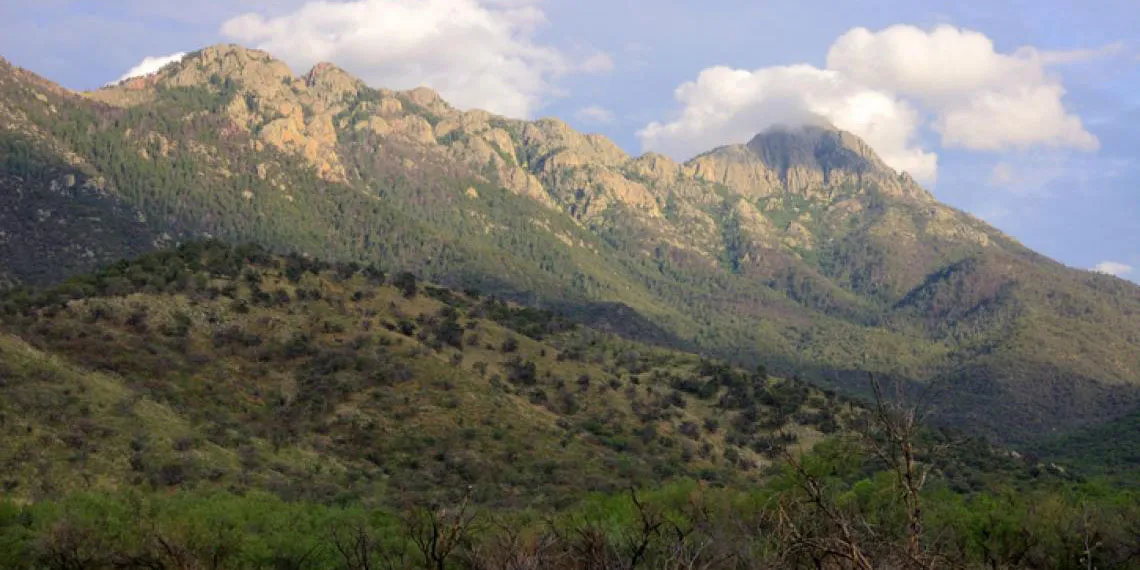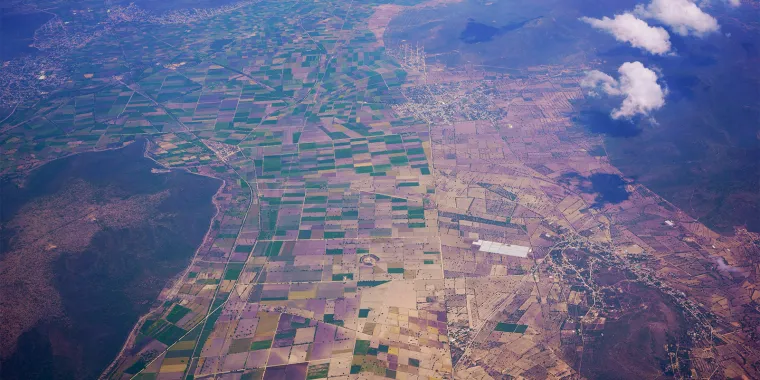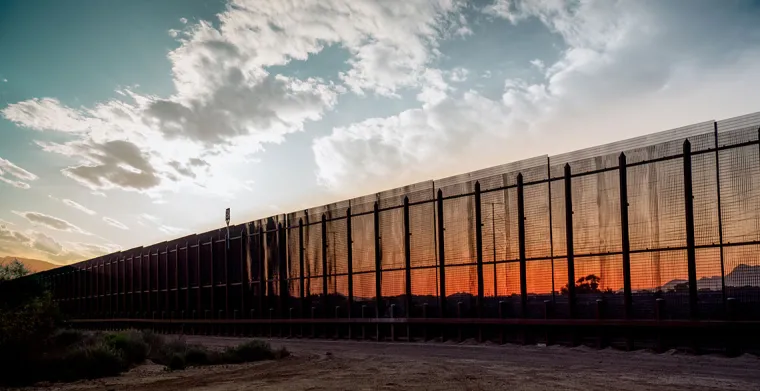Along the U.S.-Mexico border, a team of scientists and volunteers is committed to rebuilding flourishing plant and animal communities through a network of collaboration.
Misconceptions about the borderlands abound in national discussion. There’s the impression that the area is desolate. That it’s a scary place. That it needs to be controlled. “When I think of the border, I think of this large region that has many different biomes,” says Ben Wilder, director of the University of Arizona’s Desert Laboratory on Tumamoc Hill. “There’s this natural flow of species, plants and water that runs north and south that is bisected by this arbitrary line.”
Efforts to restore the borderlands are as diverse as the ecosystem itself. Just as each species of bird, bat and agave plays a role in the success of the region, the work to conserve these lands requires biologists, anthropologists, horticulturists, geographers, social workers and more. In a word, it requires people.
“All the work being done to restore the area requires people, partnerships, mutual understanding and trust,” says Wilder, who co-founded Next Generation Sonoran Desert Researchers, or N-Gen, an organization designed to bring together researchers who are actively working to preserve and study the U.S.-Mexico borderlands. “These relationships don’t materialize out of thin air. They require opportunities to come together and grow.”
N-Gen is one such opportunity that brings together over 900 members from 40-plus disciplines spread across 21 regions of the Sonoran Desert—practically the textbook definition of a cross-disciplinary effort. In 2018, 96 of its members participated in the first ever Border BioBlitz—an effort to document as many plant and animal species as possible along the border. The group recorded 881 species across 2,768 observations. “This data gives an alternate face to the borderlands—it’s not a desolate place,” Wilder says. “It also gives researchers access to quantifiable data and helps train the next generation of researchers and citizen-scientists.” (The 2020 event has been postponed due to the pandemic.)
Collaboration is a common thread in the borderlands restoration community. Nonprofits work with federal agencies who work with universities who work with researchers who work with local volunteers. The Patagonia, Arizona-based nonprofit Borderlands Restoration Network (BRN) brings together multiple organizations to rebuild ecosystems, creating a “restoration economy” that combines collaboration with investment in the local community.
“Some people thought we were here to put them out of work, but the truth is the opposite,” says David Seibert, PhD, co-founder of BRN. “We hire people and put them to work. We’ve shown people that there are places for them in restoration. We need lawyers, accountants, law enforcement. I think we’ve proven that we’re pro-opportunity and pro-taking care of the places we live.”
One of the ways BRN is doing that is through its native plant program. Francesca Claverie, manager of the program, estimates that the program produces over 100,000 plants a year, which support special projects, like the Mansfield Mine clean-up efforts in the Santa Rita Mountains and the restoration of Emory oaks in Smith Canyon near Patagonia. “If you can get an oak tree established, it’s set for hundreds of years,” Claverie says. “It offers shade and hosts insects and birds—it’s so incredible.”
BRN’s native plant program is also involved in a bi-national effort being led by Bat Conservation International. The goal? To plant 1 million agaves in the U.S. and Mexico over the next 10 years. The reason? These agave are crucial nectar sources for the Mexican long-nosed bat and the lesser long-nosed bat, but they are dwindling in numbers due to climate change and increased development. The plants are also harvested in the wild to make Bacanora, a type of agave spirit specifically made in Sonora, Mexico, further reducing the nectar available for the bats.
“In order to produce Bacanora, you need to use the sugars in the base of the plants, which means the plants aren’t allowed to flower,” Claverie says. “These agave only flower once, and then they die. When they don’t flower, they don’t provide food for the bats.”
For its part, BRN is collecting native seed and growing thousands of agave for the restoration efforts. It’s also working on a bat-friendly certification for Bacanora producers, in partnership with Colectivo Sonora Silvestre, a group of recent biology graduates from the University of Sonora in Hermosillo, Mexico.
“There’s so much good work happening, from mid-size nonprofits like us to one-woman nonprofits who are doing a lot,” Claverie says.
And the progress they’re all working toward—increased biodiversity, the protection of at-risk pollinators and the removal of invasive plants, to name a few—is happening against a backdrop of militarization of the border.
“By the end of the current phase of construction of the border wall, nearly all of Arizona’s shared border with Mexico will be sealed off, blocking the processes and flows that sustain the Sonoran Desert landscape—flows of water, wildlife and humans will now be truncated,” says Jeffrey M. Banister, PhD, director of the UA’s Southwest Center.
Banister is working on a project called The Borderlands Observatory, which highlights the effects of border militarization on the borderlands and brings together the Southwest Center, the School of Geography, the Southern Border Communities Coalition, the Universidad Nacional Autónoma de México, the BRN and an array of community organizations. The group will work with activists and nonprofits engaged in border advocacy and present their stories and research to the world in the hopes of sparking even more collaboration among those working in this space.
“It’s easy to get bogged down when the borderlands are under siege,” Wilder says. “But there are heroes everywhere. And when you find people who have shared interests, who are dedicated to the area, the collaborations just pop.”




